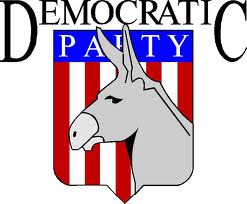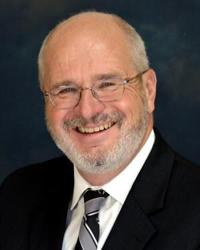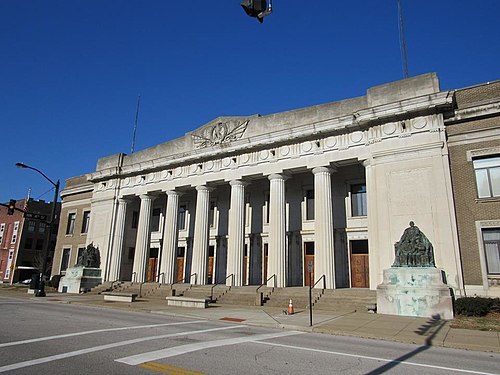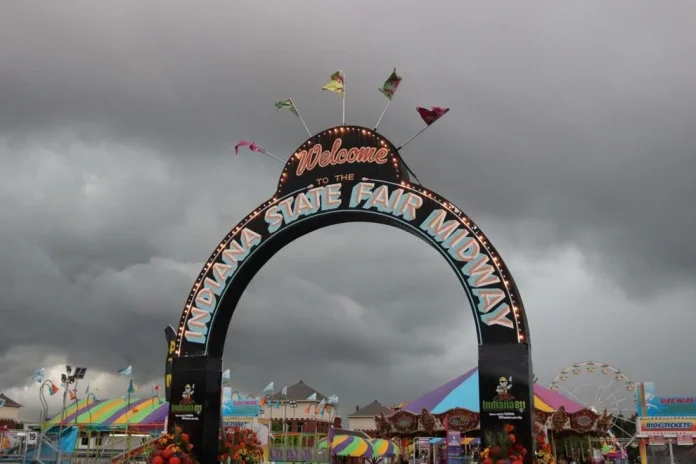Indianapolis installed no-turn-on-red signs this past summer in downtown despite the Indiana General Assembly banning the city from prohibiting right turns on red lights. (Photo/Marilyn Odendahl)Â
 By Marilyn Odendahl
The Indiana Citizen
November 1, 2023
The ordinance targeting Indianapolis’ high eviction rate by protecting tenants and punishing deceitful landlords should have been something Democratic mayor Joe Hogsett could have championed during the 2023 mayoral campaign.
Instead, the incumbent mayor could only point to the Indiana Statehouse – and shrug.
Indianapolis has one of the highest eviction rates in the country, according to data from Princeton University’s Eviction Lab. Over the past year alone, 27,876 eviction petitions were filed with the courts, a rate higher than the 23,570 evictions in Columbus, Ohio, and more than double the 12,219 evictions in Cincinnati.
Not surprisingly, the issue came up during the Oct. 23 Indianapolis mayoral debate on WISH-TV. Hogsett and his Republican challenger, Jefferson Shreve, were asked what they would do to address housing inequity in the city.
The mayor highlighted an ordinance that he signed in February 2020, which would have required that renters be informed of their rights and have prohibited landlords from retaliating if tenants complained to outside agencies about living conditions inside the rental property.
“What happened,†Hogsett asked rhetorically during the mayoral debate. “Well, entities took our legislation and went over to the Indiana General Assembly and they essentially told us that it was not part of their program and did away with it.â€
State lawmakers reacted quickly in 2020 by inserting language into HEA 148, which prohibited local communities from imposing penalties on retaliatory landlords. Gov. Eric Holcomb vetoed the bill, allowing Indianapolis’ ordinance to remain in place. However, when the Indiana General Assembly convened for the 2021 session, Republicans overrode Holcomb’s veto and blocked Indianapolis’ ordinance, upending the city’s attempt to lower its eviction rates.
“That’s very frustrating,†Hogsett said of the legislature’s action, “and that’s what we face all too often.â€
Municipal elections have always been touted as the most important for the electorate, because the decisions the mayor and city council members make have a direct impact on voters’ lives. Under so-called “home rule,†cities and towns have the independence to tailor their functions and policies to best serve their communities’ own needs.
But the exchange over the tenants’ bill of rights ordinance shows that the Indiana General Assembly can, and will, override local authority.
The Statehouse has stepped on home rule by barring cities and towns from raising the minimum wage and regulating guns. Legislators have gone after zoning rules and housing regulations, and, perhaps most famously, ended Bloomington’s ban on plastic shopping bags.
Consequently, Hoosiers may be asking, “Are municipal elections as important as they once were?â€
Matthew Greller, CEO of Accelerate Indiana Municipalities, said local elections matter more than they ever have.
“I think a lot of people will point to the legislature and say that this authority or that authority has been preempted, but if you give a holistic look at what a mayor or a town manager or somebody on the city council can get done just in a day, it’s pretty remarkable,†Greller said. “I think it does still have the most impact on everyday citizens that live in a community.â€
Local elected officials, he continued, have the power to quickly fix problems, like a buckled sidewalk, a pothole or uncollected trash, unlike lawmakers in the Statehouse or on Capitol Hill.
Moreover, Greller said, as the Midwest is starting to attract remote and semi-remote workers from other parts of the country, in part, because of its lower cost of living, local elected officials have the power to create more-livable communities. In addition to crafting a local economic development plan and making sure everyday services are available, mayors and city councilors can build amenities like walking trails and pickleball courts, he said.
“None of those things would have been possible without the home rule powers that we have now,†Greller said. “Oftentimes we get caught up in the big, flashy things that the legislature talks about and the lack of home rule here and there, but what we have to remember is that there’s a whole lot a city and town can do without interference from anybody.â€
Creation of home rule
Mitch Harper was a 22-year-old freshman legislator, elected in 1978, when he was named to the local government study committee, which was tasked with pulling together all the laws regarding municipalities under one title in the Indiana Code. He remembered the statutes being scattered throughout the code and written in a jumble of styles with some of the laws dating from the 1880s.
All the local government laws were put under Title 36 in the Indiana Code. Included was Indiana’s Home Rule Act of 1980, which gave municipal governments the power to adopt local laws to address local concerns and demands.
Although the statute has become a long list of restrictions, detailing the actions that local governments cannot take, Harper indicated the intent of home rule was to enable local leaders to be more independent and proactive in their governance.
“One of the things was Title 36 represented an effort to bring uniformity to local government laws,†Harper, now an attorney who serves a legal counsel for the Allen County Council, said. “But then home rule went alongside of it to say we don’t want to make it so strict that you can’t go out and create things on your own.â€
Even so, not all legislators liked the idea of home rule, Harper said, and, in fact, it had been brought up in the past but repeatedly denied.
Harper explained before home rule, mayors had to trek to the Statehouse “with hat in hand and with a tin cup out†to ask their legislators for extra powers to get something done in their communities. One lawmaker told Harper he liked the local mayors coming to see him about special stuff they wanted to be able to do.
While home rule was finally gaining traction and moving through the legislature, Harper recalled “everyone professed to be for home rule, but the devil was in the details because different folks really didn’t want to give free rein.â€
Former Fort Wayne mayor Paul Helmke, a Republican, sees state legislators as still liking to be asked to help with a perceived problem or concern at the local level. However, instead of mayors coming to the Statehouse, it is residents or business owners unhappy with a decision made by their local officials that are turning to their state legislators. Too often, he said, the General Assembly will reverse the actions taken by cities and towns.
Helmke, director of the Civic Leaders Center at Indiana University Paul H. O’Neill School of Public and Environmental Affairs, said the impact ripples beyond squashing a local ordinance. It erodes voters’ confidence in their local officials.
“It is weakening local government and it’s weakening, I think, people’s respect for and trust in government,†Helmke said. “And it is particularly bothersome to me, because it flies in the face of what used to be traditional Republican philosophy, which is government is best at the local level.â€
Dependent on legislature
During the 2023 legislative session, lawmakers did not even wait for Indianapolis to pass an ordinance banning right turns on red lights in the downtown area. Sen. Aaron Freeman, R-Indianapolis, led the effort to block the proposed ordinance, telling CBS4, “I’m all for local government until it’s stupid and that is stupid.â€
Gov. Eric Holcomb signed the bill that contained Freeman’s amendment in April. However, the City-County Councilors passed the ordinance in June, believing they could ban turns on red before the law took effect on July 1. Freeman said either the courts could decide the issue or the legislature could take further action when the 2024 session starts in January.
The city of Indianapolis confirmed to The Indiana Citizen that no lawsuit has been filed to date.
Greller, of Accelerate Indiana Municipalities, said sometimes cities and towns are able to work with the legislature to reach compromises on issues of home rule.
In particular, he pointed to House Enrolled Act 1016, passed during the 2023 session, which automatically established merit boards in local communities to handle the hiring, firing and promotion of public-safety officers. The bill mandated merit boards in communities of 10,000 or more that have at least 12 full-time police or fire employees.
Rep. Jim Pressel, the bill’s author, acknowledged his legislation would probably get “a little bit of pushback†from local officials who want to make the decision themselves on whether to have a merit board. But he said that was not the best policy.
“(This bill) does keep the politics out of any kind of promotion or hiring,†Pressel, R-Rolling Prairie, told the members of the Senate Committee on Pensions and Labor.
Accelerate Indiana Municipalities opposed the bill because the merit boards were automatically established. In addition, communities that did not want a board had to essentially opt out twice by requiring the city or town council to reject it, followed by a thumbs down from a majority of the public safety officers.
“We already have members in our organization that have merit systems and really enjoy them,†Chris Bandy, government affairs manager at AIM, testified at the hearing before the House Committee on Employment, Labor and Pensions. “We’re here to simply preserve the local government’s ability to initiative these conversations about what system works best for their communities and not be automatically opted into such a system.â€
Although the bill did become law, Greller said AIM was able to convince the legislature to impose the mandate on larger municipalities of 20,000 or more, so “the bill impacts far less communities.â€
Local governments are limited in how hard they can fight the Statehouse because, Greller said, municipalities are dependent on the General Assembly for everything, including part of their funding. Unlike counties which are created by the Indiana Constitution, cities and towns are created by the legislature so, theoretically, the legislators could eliminate those cities and towns, he said.
“We are dependent on everything,†Greller said. “So we are always aware of that fact. We are always aware that we have to maintain a good working relationship with the General Assembly and the governor and everybody else. So we are as dependent, if not more so, than anyone.â€
Helmke said some things must be uniform across the state, but the legislature should allow local governments to determine what is best for their communities, rather than arbitrarily writing special legislation to block an initiative in one municipality only. He pointed, in particular, to the Statehouse trying to prevent Indianapolis from enforcing the no-turn-on-red ordinance, while taking no action to stop Bloomington from prohibiting turns on red.
“The issues in Fort Wayne or Indianapolis or Bloomington are different than the issues in Angola or Ellettsville,†Helmke said. “Different-sized cities have different-sized concerns and issues and you should let them respond. One size does not fit all.â€
FOOTNOTE: Dwight Adams, a freelance editor and writer based in Indianapolis, edited this article. He is a former content editor, copy editor and digital producer at The Indianapolis Star and IndyStar.com, and worked as a planner for other newspapers, including the Louisville Courier Journal.


















